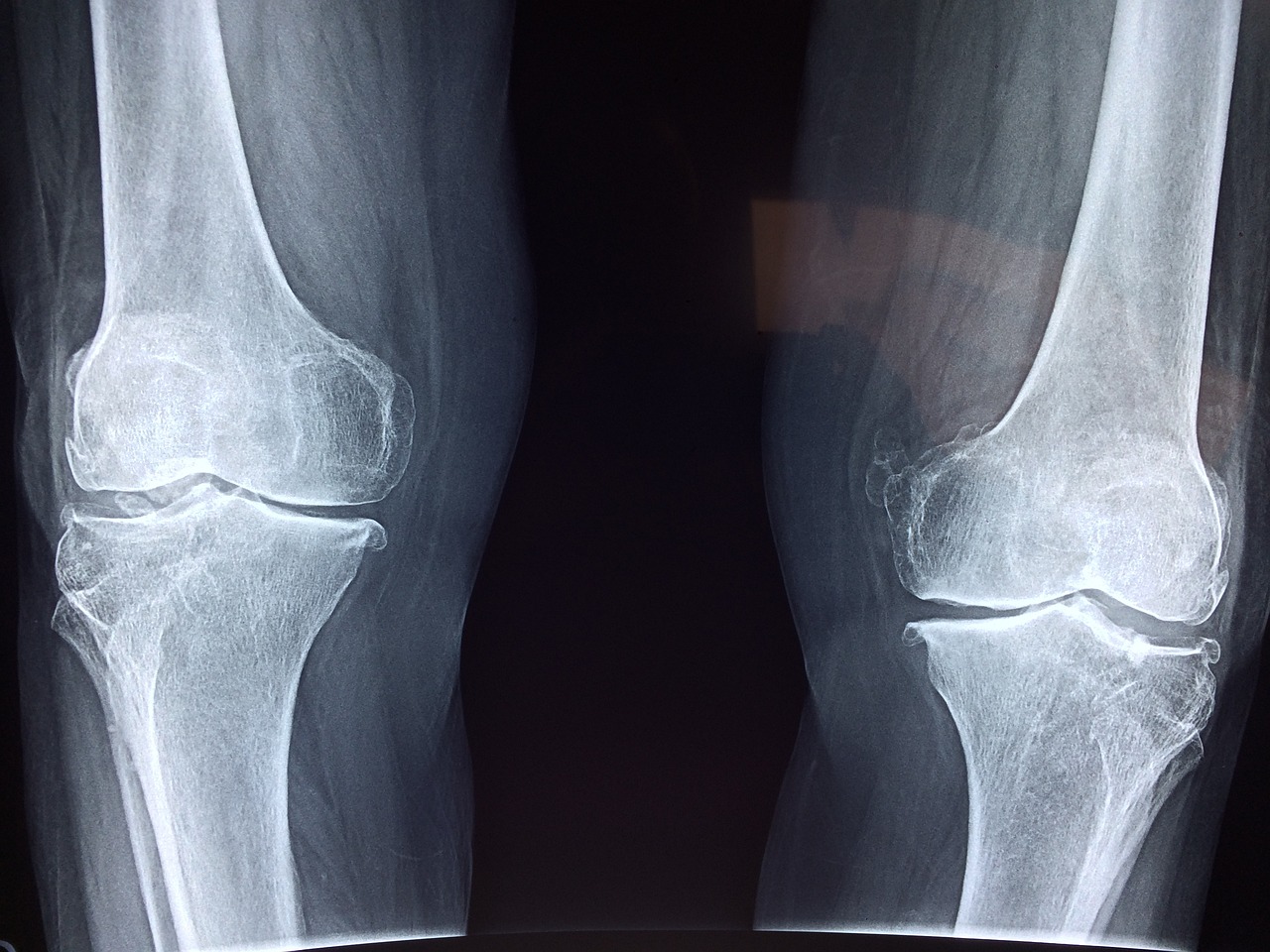Functional outcome measures show faster recovery with ‘partial’ versus total knee arthroplasty
For selected patients with knee osteoarthritis, unicompartmental (or “partial”) knee arthroplasty (UKA) shortens the recovery time for two key measures of physical function, as compared with total knee arthroplasty (TKA), reports a randomized trial in The Journal of Bone & Joint Surgery. The journal is published in the Lippincott portfolio in partnership with Wolters Kluwer.

Image by Dr. Manuel González Reyes from Pixabay CC0 Public Domain
Medical Xpress December 22, 2023
On performance-based tests of walking speed and mobility, patients who underwent UKA show better function starting at 6 weeks postoperatively, compared to 3 to 6 months for those who underwent TKA, according to the clinical trial by Boonchana Pongcharoen, MD, and colleagues of Thammasat University, Pathum Thani, Thailand.
| Performance-based tests may clarify functional recovery after knee replacement |
In UKA, just one of three compartments of the knee – the medial compartment – is replaced with a prosthesis. Because it preserves most of the normal anatomy of the knee, UKA may offer a shorter hospital stay and greater knee range of motion postoperatively compared with the more common TKA.
With both procedures, functional recovery is typically measured with use of patient-reported outcome measures (PROMs), which provide data regarding the patients’ perceptions of their functional activity. “However,” the researchers write, “recent studies have indicated that actual functional recovery is overestimated by PROMs.”
The new study focused on two performance-based tests that directly assess physical function. The 2-minute walk test (2MWT) measures how far patients can walk in 2 minutes, reflecting endurance or walking capacity. The timed up-and-go (TUG) test addresses the ability to rise from a chair, walk a short distance, and sit down again, providing information on functional mobility, balance, and risk of falling.
In the clinical trial, 99 patients with knee osteoarthritis isolated to the medial compartment of the knee were randomly assigned to undergo either UKA or TKA. All patients were assessed with use of the 2MWT and TUG preoperatively and at specified postoperative timepoints. Patient-reported outcomes were tested as well.
The results suggested faster functional recovery according to the 2MWT and TUG in patients who underwent UKA versus TKA. At 6 weeks postoperatively, the 2MWT distance was 96.5 meters in the UKA group versus 81.1 meters in the TKA group. The difference remained significant at 3 months (10.21 versus 87.5 meters) and 6 months (102.8 versus 89.6 meters). At 1 and 2 years postoperatively, 2MWT distances were similar between the two groups.
| PROMs ‘not entirely capable’ of showing differences in functional recovery following UKA versus TKA |
Patients who underwent UKA also had better performance on the TUG at 6 weeks and 3 months. By 6 months, TUG times were similar between groups. In contrast, most PROMs suggested similar outcomes at all postoperative timepoints.
Radiographic and clinical outcomes were similar between groups. Patients undergoing UKA had shorter operative times and reduced blood loss, as expected with their less extensive knee surgery. Functional outcome measures and PROMs improved significantly from preoperatively to postoperatively following both surgical procedures.
“The present study demonstrates that PROMs are not entirely capable of detecting the difference in functional recovery between UKA and TKA,” Dr. Pongcharoen and coauthors write. They note the findings are also consistent with reports showing that quadriceps muscle strength and knee biomechanics recover more quickly following UKA versus TKA
The randomized trial is the first to demonstrate faster recovery of 2MWT and TUG test scores after UKA compared to TKA. “However, PROMs are still important because they can assess some activities of daily living, such as stepping up and down and putting on socks and pants, that are not assessed in performance-based tests,” Dr. Pongcharoen and colleagues write. “Therefore, routine use of the 2MWT and TUG combined with PROMs in standard clinical assessments is recommended to capture the actual improvement in physical status and provide a more comprehensive perspective of functional recovery after UKA and TKA.”
Source Medical Xpress via Wolters Kluwer Health: Lippincott, Newswise
| References |
Comparison of Functional Recovery Between Unicompartmental and Total Knee Arthroplasty: A Randomized Controlled Trial, Pongcharoen B, Liengwattanakol P, Boontanapibul K. J Bone Joint Surg Am. 2022 Dec 21. doi: 10.2106/JBJS.21.00950. Epub ahead of print.
| Further reading |
Early Results of a Randomized Controlled Trial of Partial Versus Total Knee Arthroplasty, Sershon RA, Fricka KB, Hamilton WG, Nam D, Parks NL, DeBenedetti A, Della Valle CJ. J Arthroplasty. 2022 Jun;37(6S):S94-S97. doi: 10.1016/j.arth.2022.02.076. Epub 2022 Feb 26. Full text, PDF
Total versus partial knee replacement in patients with medial compartment knee osteoarthritis: the TOPKAT RCT, Beard DJ, Davies LJ, Cook JA, MacLennan G, Price A, Kent S, Hudson J, Carr A, Leal J, Campbell H, Fitzpatrick R, Arden N, Murray D, Campbell MK. Health Technol Assess. 2020 Apr;24(20):1-98. doi: 10.3310/hta24200. Full text, PDF
The clinical and cost-effectiveness of total versus partial knee replacement in patients with medial compartment osteoarthritis (TOPKAT): 5-year outcomes of a randomised controlled trial, Beard DJ, Davies LJ, Cook JA, MacLennan G, Price A, Kent S, Hudson J, Carr A, Leal J, Campbell H, Fitzpatrick R, Arden N, Murray D, Campbell MK; TOPKAT Study Group. Lancet. 2019 Aug 31;394(10200):746-756. doi: 10.1016/S0140-6736(19)31281-4. Epub 2019 Jul 17. Full text
Also see
New insights into the structural changes associated with osteoarthritis Carl R. Woese Institute for Genomic Biology, University of Illinois
